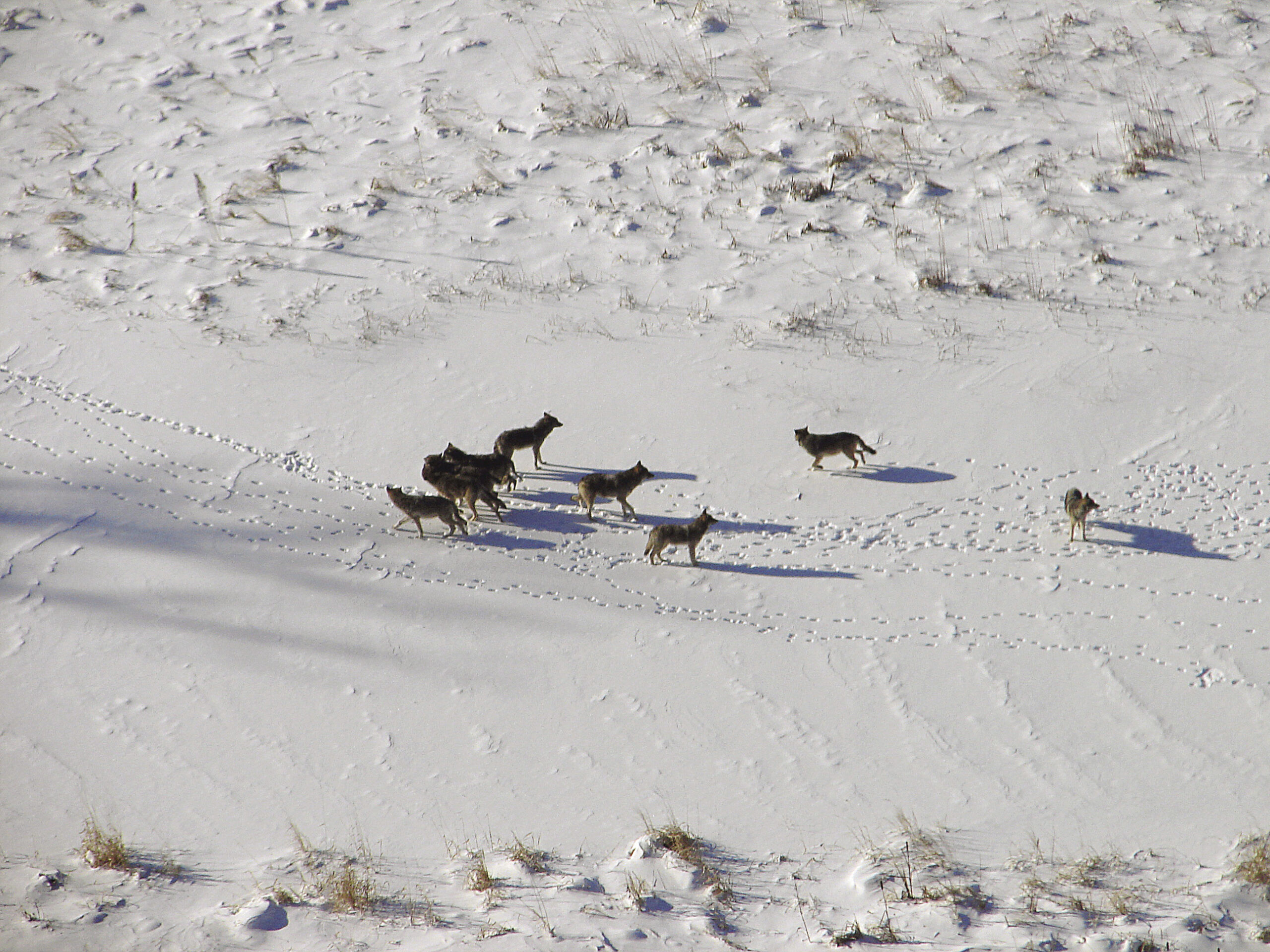North Shore—If consistency is a measure of success, Minnesota’s wolf population is doing just fine.
Results from the most recent wolf population survey (released in August 2016) show no significant change in the state’s wolf population during the past four years, according to the Minnesota Department of Natural Resources.
The latest survey results estimate that within Minnesota’s wolf range there were 439 wolf packs and 2,278 wolves. This in comparison to 374 packs and 2,221 wolves the year before. There has been no biologically or statistically significant change in the size of the statewide wolf population over the past four years, according to the DNR.
So with regard to population, stability is often a good thing.
However, when it comes to wolves in the Great Lakes region, there is more than consistency of their population that factor into public opinion about the animals. It’s no secret that some folks have a deep-rooted disdain for wolves. A collection of people in Minnesota and beyond view wolves as ruthless predators that have negative impacts on livestock, moose and deer. Perhaps supporting their argument is the notion that one in every three Minnesota moose calves born in 2016 was likely killed by either a bear or wolf, according to Glenn DelGiudice, the DNR’s moose project leader in the research unit.
Meanwhile, if a wolf attack on pets or livestock is verified in Minnesota, federal trappers can kill what are commonly referred to as “problem wolves.” For more than a decade, federal trappers have killed between 100 and 250 Minnesota wolves annually, said John Hart, who oversees a sanction of wolf management at the USDA Wildlife Services office in Grand Rapids. For example, in 2016, Hart explained, 191 wolves were killed in response to damage to livestock, poultry, pets and occasionally some human-safety issues.
“It’s a pretty typical number, that 175 to low 200 is the number of wolves we’ve been taking in response to depredation during the past decade,” Hart said. “And while it’s a lot of wolves, remember we have a very big wolf range, approximately the northern half of the state and a real large, healthy wolf population that is increasingly in close contact with people and agriculture and towns and dogs. So there is just more opportunity for conflict than there was several decades ago when wolves were confined to the far northern forests.”
Expanding from the far reaches of the north, the wolf range in Minnesota has moved near the Twin Cities area, with confirmed packs in Isanti County and northern Anoka County, according to Hart.
“Wolves are really expanding their range and are just more likely to be in areas where there is more conflict,” he said. “And where there is conflict, that lethal removal of wolves seems to be the most successful way to deal with it. And in spite of us taking a relatively high number of wolves, the wolf population seems to be stable to increasing, and the wolf range continues to be expanding. And lethal removal is kind of the downside of a wolf recovery story.”
And though select wolves might give the entire species a bad reputation, some people pitch the predator factor out the window and simply state that wolves have too much protection from the federal government. And that protection could be changing in Minnesota in the very near future. Under current proposed legislation in Congress, the federal government would delist the gray wolf from the Endangered Species List in the western Great Lakes, with management turned over to state officials in Minnesota, Wisconsin and Michigan. This same practice was implemented in 2012-14 before U.S. District Court Judge Beryl Howell returned wolves to the Endangered Species List. So if current legislation continues to move forward, gray wolves in Minnesota could be again under state management as soon as this fall if federal protections are removed. Even though a ruling in August 2017 by the U.S. Court of Appeals for the District of Columbia continued federal Endangered Species Act protection, congressional action could return wolf management to the states. Minnesota Rep. Collin Peterson and Sen. Amy Klobuchar support returning wolf management to the state level.
According to the U.S. Fish and Wildlife Service, gray wolves were once at the brink of extinction in most of the country, but now number over 5,500 in the lower 48 states, including nearly 3,800 in Minnesota, Wisconsin and Michigan. Though for comparison, prior to federal protection, the wolf population in Minnesota and Isle Royale National Park hovered around 750 animals in the 1950s and 1960s, according to the International Wolf Center.
And as the population has been stable or increasing over the past half-decade, clearly something is working well for wolves in Minnesota. And when predators are doing well, that usually means they have something to eat. However, in the case of wolves, it also means territory adjustments.
According to John Erb, DNR wolf research scientist, when prey numbers change, wolves must eventually re-adjust to the new conditions.
“In recent years we’ve observed a decline in prey that translated into larger wolf pack territories, and the reverse is now to be expected if deer numbers continue to increase,” Erb said.
The most recent survey estimated an average of 4.4 wolves per pack in Minnesota, down from an average pack size of 5.1 wolves per pack in the survey prior to that.
“Regardless of the explanation, over the past 30 years, average mid-winter pack size has not shown much variability, ranging from 5.6 to 4.3,” Erb said. “Counts are assumed to represent minimum estimates given the challenges with detecting all members of a pack together at the same time.”
According to Erb, the DNR’s goal for wolf management, as outlined in the state’s wolf management plan, is to ensure the long-term survival of wolves in Minnesota while addressing wolf-human conflicts.




